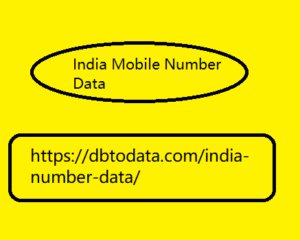Post by account_disabled on Mar 10, 2024 7:23:00 GMT
Are social media becoming paid services? Yes, but not completely. Something is changing? Definitely yes, as I predicted in my 2023 Trends report . Let's start by saying that trying to charge social media users is nothing new. LinkedIn launched Premium way back in 2013, thinking about users who wanted to get more job opportunities (direct emails to strangers and additional insights). YouTube introduced the Premium offer in 2018 giving the possibility to use the app in the background without seeing advertisements and to download videos. In 2022 it was the turn of Snapchat Plus (in June) which offers additional creative functions, Discord with Nitro (October) which gives you the right to create your own server, upload larger files and broadcast in HD and finally Twitter Blue ( November).
Then, a few days ago, Mark Zuckerberg also endorsed this trend with India Mobile Number Data the announcement of Meta Verified. What is Meta Verified? Meta Verified is a monthly subscription (only for adults) which entitles you to a series of premium services: Blue badge i.e. identity verification (by sending an official document Active monitoring of any “impersonation” Customer support (human) Greater visibility for comments and produced content (in the feed, search results and Explore sections) Exclusive stickers to use in Instagram Stories and Reels A pack of 100 stars per month (to be used to donate them to creators) For now the test is active in Australia and New Zealand at a price of $11.99 (from the web) and $14.99 (from the app store). Meta aims to convince 12 million paying customers by 2024 with an income of 1.7 billion.

Therefore, it is clear that the program is intended for a small minority of users of the Zuck family of apps (which number over 3 billion). In particular, creators who need to protect their brand and need real support (the program, for now, does not apply to corporate accounts). The critical aspects of Meta Verified The first aspect to highlight is that, with this program, Meta is changing the concept of "verified account". So far the blue rosettes have identified noteworthy people, tomorrow they will indicate those who have provided a document to certify their identity, for a fee. So, probably, the old blue ticks will be eliminated (while Twitter has opted for a less clear system). The second theme raised by this new program is that of safety. There are those who argue that security will become a luxury, that only paying people will have secure profiles.
Then, a few days ago, Mark Zuckerberg also endorsed this trend with India Mobile Number Data the announcement of Meta Verified. What is Meta Verified? Meta Verified is a monthly subscription (only for adults) which entitles you to a series of premium services: Blue badge i.e. identity verification (by sending an official document Active monitoring of any “impersonation” Customer support (human) Greater visibility for comments and produced content (in the feed, search results and Explore sections) Exclusive stickers to use in Instagram Stories and Reels A pack of 100 stars per month (to be used to donate them to creators) For now the test is active in Australia and New Zealand at a price of $11.99 (from the web) and $14.99 (from the app store). Meta aims to convince 12 million paying customers by 2024 with an income of 1.7 billion.

Therefore, it is clear that the program is intended for a small minority of users of the Zuck family of apps (which number over 3 billion). In particular, creators who need to protect their brand and need real support (the program, for now, does not apply to corporate accounts). The critical aspects of Meta Verified The first aspect to highlight is that, with this program, Meta is changing the concept of "verified account". So far the blue rosettes have identified noteworthy people, tomorrow they will indicate those who have provided a document to certify their identity, for a fee. So, probably, the old blue ticks will be eliminated (while Twitter has opted for a less clear system). The second theme raised by this new program is that of safety. There are those who argue that security will become a luxury, that only paying people will have secure profiles.
